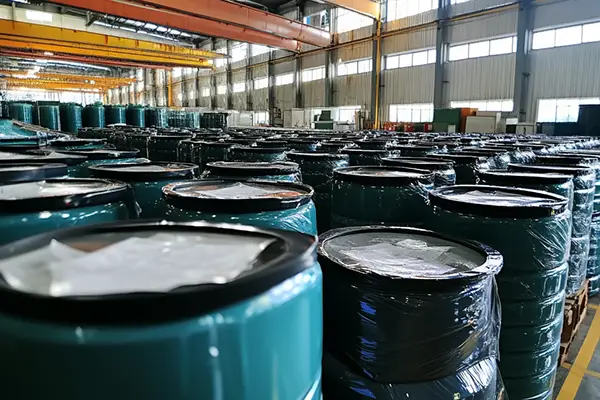
Polyurethane (PU) is widely used in the manufacturing of gloves. But is it a good material for work gloves? Let’s explore the pros and cons to help you make an informed decision.
PU gloves are lightweight, flexible, and offer excellent grip. They are a great option for precision tasks, but might not be the best for extreme conditions like heavy abrasion or high heat.
Whether you’re in assembly, logistics, or another field requiring hand protection, understanding the material’s strengths and limitations is crucial. Let’s dive deeper into the role of PU in gloves.
What is the toughest material for work gloves?
When it comes to heavy-duty tasks, toughness matters. But what is the toughest material for work gloves that can handle the toughest conditions?
The toughest materials for work gloves include Kevlar, steel mesh, and high-performance polyethylene (HPPE), which offer excellent resistance to cuts and abrasions.

While PU gloves are known for their flexibility and lightness, they may not be the best option for extreme conditions. For work environments that require maximum protection, tougher materials like Kevlar and HPPE are often used in combination with coatings like nitrile or PVC to enhance their durability.
- Kevlar: Known for its strength, Kevlar is resistant to cuts and abrasions. It is commonly used in gloves for handling sharp materials, glass, and metal.
- Steel Mesh: Offers high protection against cuts, punctures, and abrasions. It’s typically used in gloves for heavy industrial or construction work.
- HPPE (High-Performance Polyethylene): Offers high cut resistance and is often used in gloves designed for metalworking, construction, and glass handling.
Comparison Table: Tough Materials for Work Gloves
| Material | Strength/Resistance | Common Uses |
|---|---|---|
| Kevlar | Excellent cut resistance | Glass handling, metalworking |
| Steel Mesh | Puncture and cut resistance | Heavy industrial work |
| HPPE | High cut and abrasion resistance | Construction, glass, metalwork |
How long does PU coating last?
PU-coated gloves are known for their flexibility, but how long do they last? Let’s explore how long you can expect PU coating to hold up.
The lifespan of PU coating depends on the application, but generally, it lasts between 6 months to 1 year under normal use, depending on wear and tear.
The durability of PU coatings varies based on the intensity of use and the work environment. For gloves used in light to medium-duty tasks, PU coatings can last for months or even longer. However, exposure to abrasives, harsh chemicals, or excessive heat can shorten the lifespan.
In less demanding environments,PU coatings can maintain their integrity for up to a year. However, for heavy industrial or high-impact tasks, you may need to replace the gloves more frequently.
Factors Affecting PU Coating Durability
| Factor | Impact on PU Coating Durability |
|---|---|
| Abrasion | Accelerates wear and tear |
| Chemical Exposure | Can break down the coating faster |
| Temperature | High heat can degrade the coating |
What does PU stand for in material?
PU is often seen on glove labels and product descriptions, but what exactly does PU stand for in materials?
PU stands for polyurethane, a versatile synthetic polymer used in a wide range of applications, including glove coatings for added flexibility and durability.
Polyurethane (PU) is a synthetic polymer1 made by combining various chemical compounds. It is widely used for creating coatings, foams, and elastomers. In the context of gloves, PU is valued for its flexibility, durability, and resistance to wear.
PU’s ability to be molded into different forms allows manufacturers to create gloves with varying levels of protection2, from lightweight, precision gloves to more rugged, durable options for industrial use. Its popularity also stems from its ability to provide a comfortable fit and high dexterity.
Common Applications of PU Material
| Application Type | Characteristics |
|---|---|
| Work Gloves | Flexible, lightweight, and durable |
| Furniture | Soft, leather-like texture |
| Foams | Cushioning and comfort |
How to identify PU coating?
PU-coated gloves are popular for their comfort and flexibility. But how can you identify if a glove has a PU coating?
PU-coated gloves are often thin and lightweight with a smooth finish. You can identify them by their soft texture and flexibility, often providing a second-skin feel.
Identifying PU coating is fairly simple once you know what to look for:
- Texture: PU coatings are often smooth and soft to the touch. They provide a lightweight feel and a good level of dexterity.
- Finish: The coating may have a glossy finish or a matte appearance depending on the application.
- Flexibility: PU-coated gloves are highly flexible, offering great dexterity and ease of movement, making them ideal for precision tasks.
- Breathability: Some PU coatings are breathable, allowing moisture to escape and keeping your hands cooler during extended wear.
While PU-coated gloves are thin, they can still provide a strong grip and resistance to light abrasion.
Tips for Identifying PU Coating in Gloves
| Characteristic | Identifying PU Coating |
|---|---|
| Touch | Smooth, soft texture |
| Finish | Glossy or matte finish |
| Flexibility | Very flexible and lightweight |
Conclusion
Polyurethane is a versatile and cost-effective material for gloves, offering flexibility, comfort, and durability. While not suitable for extreme conditions, PU-coated gloves perform well in tasks requiring precision and light protection.



